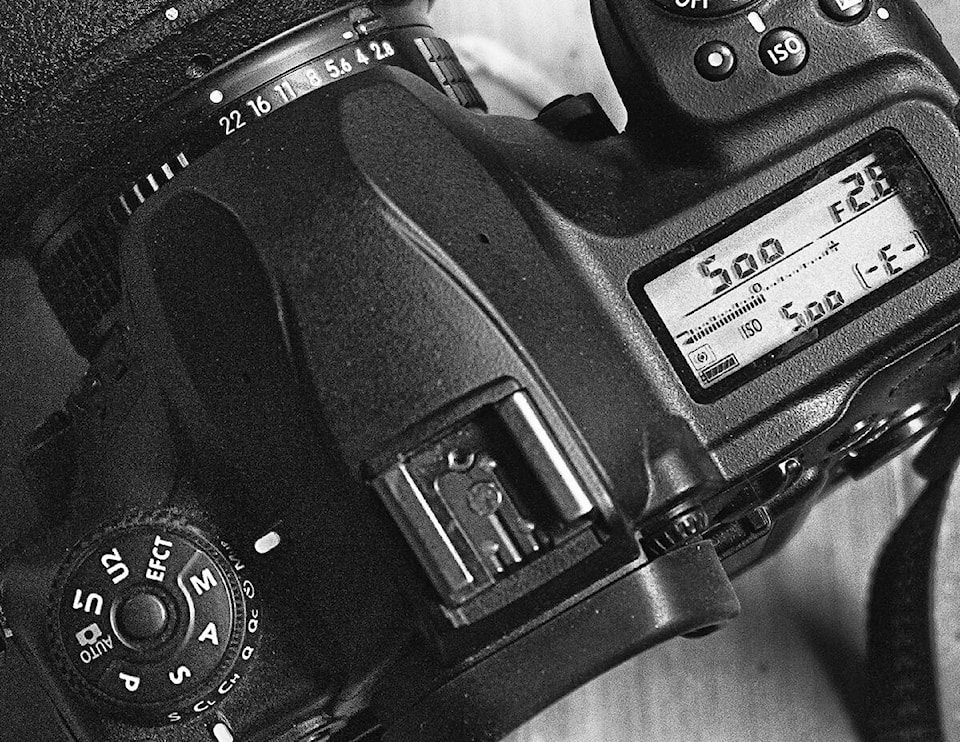This past week I talked with a photographer about exposure. Actually, we sent text messages back and forth, and I suppose that’s the modern way of communicating.
Our discussion was about something pretty simple — getting detail in both the highlights and the shadows on a sunny day. However, when I suggest using a camera’s manual mode I always get the feeling that what actually goes through the thoughts of the person I am talking to is, “What the heck? My expensive and technically sophisticated camera has more than one auto-mode why would I bother with a manual mode?”
So, here I go again with my quick discussion on why the manual mode might be the best setting “sometimes.”
Digital camera sensors have a dynamic range of five or six stops, and by that I mean the range from overexposure to underexposure is about five to six stops. (Dynamic range is defined as the ability of your sensor to retain detail in the shadow area as well as detail in the highlights).
By shifting the shutter speed, a photographer allows light to reach the sensor for either a longer or a shorter time, and by opening or closing the aperture more or less light reaches the sensor. You just add or subtract the numbers until you get a proper exposure. That is the basic concept of exposure.
Its easy to experiment a bit by making test shots in different lighting using a neutral colored subject like weathered wood on an old building. I suggest also checking the histogram after each exposure to understand how your personal camera’s meter works.
To expand on the concept of exposure think about this: Years ago when I spent my weekends photographing weddings, my two main subjects were one person wearing black and one person wearing white.
If I aimed my meter at the black coat the white dress could be overexposed. If I used the white subject for my exposure the black may be underexposed. I really wanted to see detail in both (I don’t like blown-out or blocked-up details). So I usually chose an exposure about halfway between (actually closer to two-thirds on the highlight side). A good rule-of-thumb that you could use is, “Black is about two stops underexposure and white is about two stops overexposure.” That isn’t exact, but close enough to work with most of the time.
Digital cameras handle highlights and shadows differently than film cameras. For film cameras, experts would advise us to expose for the shadows and let the highlight fall where it will. Film has an exposure range that has a gradual response in highlight and shadow areas, and it is usually possible to find detail in the highlights, however shadow detail was always a problem.
Digital cameras usually record an amazing amount of detail in the shadows, but once overexposed the detail is gone forever. Digital sensors are great until they reach the maximum value of that dynamic range. When that happens, the digital term is called “clipping.” The detail can be lost or becomes very noisy (much like grain when film is pushed too far).
When we were using film our goal was to expose for the medium tones as in mid-grey or 18 per cent reflected grey. We used to try exposing for the shadows to retain detail because film held detail in the highlights very well. Digital sensors are very different in the way they handle highlights and shadows. Overexposure to underexposure is about five or six or so stops difference, so it is easy to “clip” the highlights on a sunny day.
Many photographers will advise that the ideal exposure is within half or third stop of highlight clipping. This means capturing the greatest possible dynamic range, or the capability of the camera to capture both detail in the shadow areas and the highlight areas.
To do this one needs to retain control over the exposure, and using a program or automatic mode doesn’t always give that control, however using the manual mode does. My advice is to start using the camera’s manual mode when there is a lot of contrast in a scene, and not rely on the camera’s automation. That shouldn’t be something that slows one down, it should be a way of using a camera that helps one understand and, of course, control light, shadow and the way you expose your subject.
Stay safe and be creative. These are my thoughts for this week.
Contact me at www.enmanscamera.com or emcam@telus.net
_______________
Like us on Facebook
